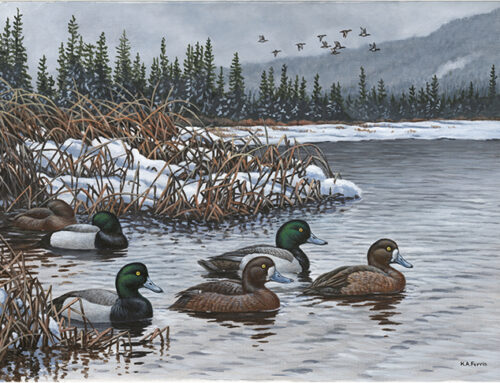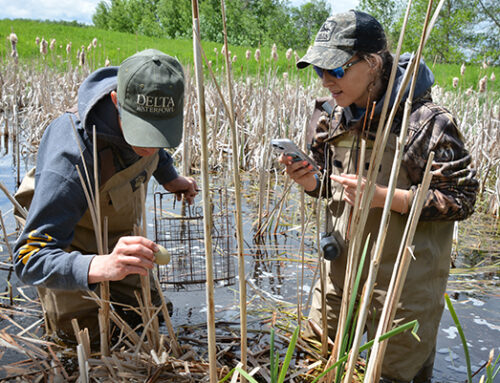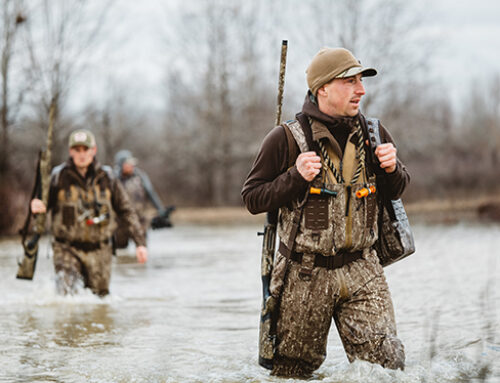2023 Goose Hunting Outlook
Spring survey highlights exceptional nesting conditions, population declines

By Kyle Wintersteen
When the U.S. Fish and Wildlife Service releases its annual Waterfowl Population Status report, the total number of ducks, including specific species such as mallards, pintails, and canvasbacks, receives almost all of the attention.
But the report also provides valuable insights about upcoming goose seasons. So, is a honking good time headed to your flyway for the 2023-2024 season? Here’s a breakdown of nesting conditions and breeding population estimates of North America’s light and dark geese.
Atlantic Flyway
The Atlantic Flyway Resident Canada goose Population is estimated at 948,000, a decrease of 7% from 2022, but still a booming population that’s on par with the 10-year average. Spring breeding conditions were average to above average, which should result in plenty of naïve juvenile birds for early and late resident goose seasons.
But unfortunately, the Atlantic Population—Canada geese that nest in Quebec and winter from New England to Maryland’s Eastern Shore—declined to 115,000, 30% below last year’s estimate of 164,000. Additionally, the smaller North Atlantic Population declined 4% to 48,000 geese.
Breeding conditions for AP geese were a mixed bag, with localized flooding mixed with drought conditions. AP geese are, of course, the population that resulted in slashed season lengths and reduced daily limits—to as few as one goose per day, in some Atlantic zones. However, the new integrated population model is predicting moderate regulations (two to three geese daily, depending on zone), not a restrictive season.
Additionally, greater snow geese declined 22% to 585,000, 3% below the 10-year average.
Atlantic brant are a bright spot for the East Coast and, moreover, across all geese in general. They’ve increased 11% to an estimated 122,000, just 2% below the 10-year average. This is important, as they fell within the harvest prescription for 30 day, one-bird daily bags for the 2023-24 waterfowl season. Hopefully the 2023 population increase and good production, pulls them out of this slump.
Mississippi Flyway
The Mississippi Flyway Giant Population of Canada geese is estimated at 1.34 million, a 6% decline but equal to the 10-year average. Despite a late spring in some cases, the birds found strong nesting conditions throughout most of their breeding range, which includes the Mississippi Flyway states, southern Ontario, and southern Manitoba.
The Southern Hudson Bay Population—geese that nest on Hudson and James Bays—was not surveyed this spring. The 2022 survey estimated a breeding population of 113,000 birds.
Minnesota’s state survey of breeding Canada geese was unchanged from 2022. But, its estimate of 115,000 remains 26% below the long-term average.
Resident Canada geese continue to thrive in Wisconsin, though. The state’s estimate of 169,447 geese is down 1% from last year, but still 58% higher than the long-term mean.
Additionally, mid-continent white-fronted geese (specklebellies) were estimated at a thriving 3.14 million birds, just 2% below the 10-year average. However, their breeding conditions—from their western range in Alaska east to Hudson Bay—were exceptional! A nearly stable flight of specks, coupled with a potentially increased proportion of juveniles, is expected for the Mississippi and Central flyways.
These same strong conditions would’ve also benefit mid-continent cackling geese, snows, and Ross’s geese. Federal and provincial banding crews are reporting phenomenal numbers of goslings for these species. However, due to lack of banding during the Covid years, population estimates based off banding and harvest data are not available. Expect updated population estimates next year.
Central Flyway
For the Central Flyway, the Western Prairie and Great Plains Populations of Canada geese declined a whopping 42% to 1.03 million birds—importantly, however, the birds remain 1% above the 10-year average. Further, habitat conditions were generally good across their vast breeding ranges; Western Prairie geese nest in eastern Saskatchewan and western Manitoba, while Great Plains geese nest in Saskatchewan, the Dakotas and as far south as northern Texas.
Additionally, a state survey by North Dakota estimated a decline among Canada geese by 27%; however they were at an all-time high in 2022. The estimated 297,000 Canada geese still represent a strong population.
And as noted, the mid-continent specklebelly population remains a strong 3.14 million, conditions for nesting are thought to have delivered extraordinary production of specks, as well as mid-continent cacklers, snows, and Ross’s geese.
Pacific Flyway
Pacific Flyway goose hunters should mostly be in good shape. The Pacific Population of Canada geese and Aleutian cacklers both declined slightly, but remain above 10-year averages. Cackling/minima geese declined, however, down 33% to 161,000, 7% below the 10-year-average. Unfortunately, Taverners continued their long-term downward trajectory.
An estimate of Pacific Flyway Population light geese (Ross’s and snows) estimated a thriving 1.27 million birds, putting them even with the 10-year average.
It’s also worth noting that, unfortunately, emperor geese have declined by 17% to 24,000, 3% below the 10-year average. This decrease has pushed their numbers close to harvest closure, but remains high enough to maintain a small harvest.
Pacific brant declined, too, down 24% to 120,000, but just 1% below the 10-year average.
And the Pacific Population of specklebellies declined 36% to 422,000, 4% below the long-term average.
However, importantly, habitat conditions are especially strong in the Pacific Flyway—ranging from good to excellent across most regions—which should help production.
This was especially evident in California, where drought conditions have given way to extreme moisture. There, resident Canada geese responded to the improved wetland conditions. The state’s estimate of 60,353 represents a 30% increase and sits 36% above the long-term average.
Silver Lining
The status report is largely bad news for geese, with declines among 14 of the 19 surveyed goose populations; only Atlantic brant increased. However, fortunately most populations remain healthy, conditions for goose production were strong throughout most ranges, and banding crews are reporting an exceptional number of goslings.
So, while the breeding population estimates are a setback, this remains a great era to be a goose hunter.






I sure wish who ever wrote this said the truth of the facts a little. The AP geese had an excellent hatch the snow melt was the earliest in 20 years witch could have led to early nesting pair counts where done on the 18 of June. I have seen pictures from the banding crew there where goslings that looked to be 3 weeks older then others. And as for the greater snow there hatch was above average with 27% up from the 21% of juvies.
This is the problem with estimating numbers the year prior to the season. Greg Svendsen Anchorage Alaska
Seems a waterfall in this country are doing well we just have a steady lack of hunters especially among the younger groups
With all the talk about 1 million more ducks every year going forward with the help of the hen nest houses Why not offer them to be purchased to regular people like myself that have build and manged them for over 25 years the people that are building them for you guys must be able to make extras and ship them by UPS,FEDEX,or mabbe Mail
I just wonder how accurate these surveys are? I hunt the central zone and it seems as good if not better than years past.